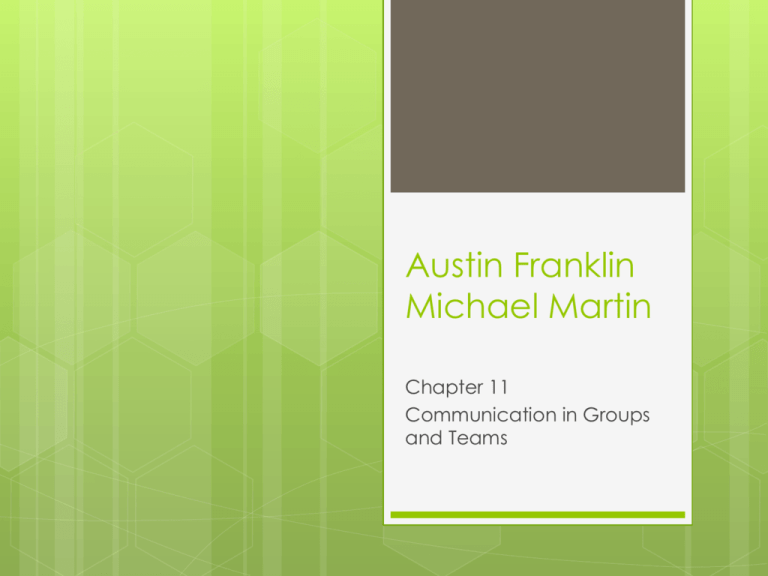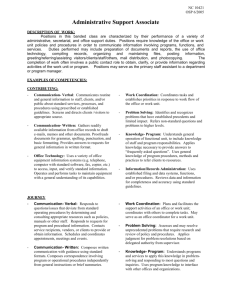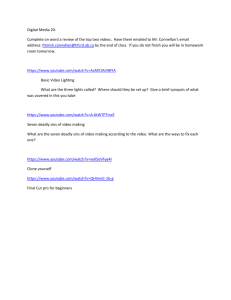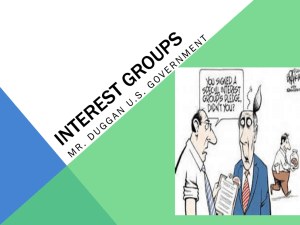Communication in Groups and Teams - Chapter 11
advertisement

Austin Franklin Michael Martin Chapter 11 Communication in Groups and Teams Defining A group is defined as three or more people who interact over time, depend on one another, and follow shared rules of conduct to reach a common goal. Group members see themselves as being interdependent, meaning that they need another to achieve something. A team is a special kind of group characterized by different, complementary resources of members and by a strong sense of collective identity. Teams are different than groups in 2 ways 1. teams consist of people who bring different and specialized resources. 2. teams develop greater interdependence and a stronger sense of identity. Groups and teams develop rules that members understand and follow. Group and team rules differ between groups, so does the way the perceive things. https://www.youtube.com/watch?v=vJMC_S-DB2I Different 1. 2. 3. 4. 5. Types of Groups and Teams Project Teams- People who have expertise related to different parts of a project who combine to make one project. Focus Groups- People grouped to find out what people think about one specific idea. Brainstorming Groups- A group of people put together to generate appropriate ideas. Advisory Groups- develop and submit recommendations to others, who make a final decision. Quality Improvement Teams- three or more people put together with distinct skills or knowledge to improve an organization. Strengths and Limitations of Groups The two most significant disadvantages of group discussions are the time needed for complete discussion, and the potential for conformity inside of groups. Strengths between groups include greater resources, more thorough thought, heightened creativity, and enhanced commitment to decisions. Synergy is a special kind of collaborative vitality that enhances efforts, talents, and strengths of individuals within a group. Features of Small Groups Small groups tend to have better connection between members, this is cohesion. Cohesion is the degree of closeness among members. In highly cohesive groups, members see themselves as tightly linked and committed to shared goals. Types of Communication Task Communication- Provides information and ideas, clarifies member understanding, and critically evaluate ideas. Procedural Communication- Gets groups organized and helps them to stay on track. Climate Communication- Creates and maintains a climate that encourages members to contribute freely. Egocentric Communication- Used to block others or to call attention to oneself. https://www.youtube.com/watch?v=7PH35C7Fhq 0 Chinese Pictionary Game Ask the first member of each team to gather in close then whisper a sentence, object or phrase to them. For example "Christmas Time" or "Boys playing basketball". They must then return to their teams and attempt to draw (without talking) a picture that communicates that phrase. When they are finished, they pass the drawing to team member 2. He/she then whispers the phrase to team member 3 who then draws it and passes it to team member 4, who then writes what they think the phrase is on the picture. Once all groups are finished, get all the Team Member 4's to reveal the drawings Leadership Leadership is essential in maintaining a long lasting group or team. Leadership can be provided by one member or by several members. Effective leadership controls disruptive members who engage in egocentric communication, and make sure discussion is substantive. https://www.youtube.com/watch?v=XribYfC1AM Discussion Question What are the best qualities for a group leader to have? PLEASE NOTE: Chapter summarized from information found in: Wood, Julia T. (2014). Communication Mosaics: An Introduction to the Field of Communication. 7th Edition. Boston, MA: Wadsworth. These student lecture notes provide a brief summary of Wood’s discussion on verbal communication (chapter 4) while providing additional commentary and examples. The information in this slideshow is based on the work (content and organization) of Wood (2014).




